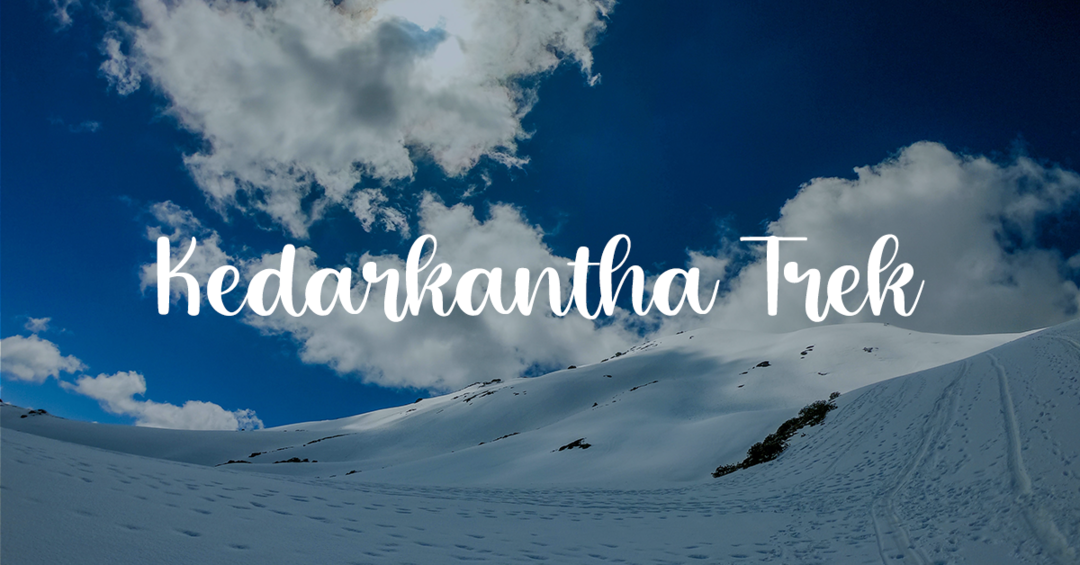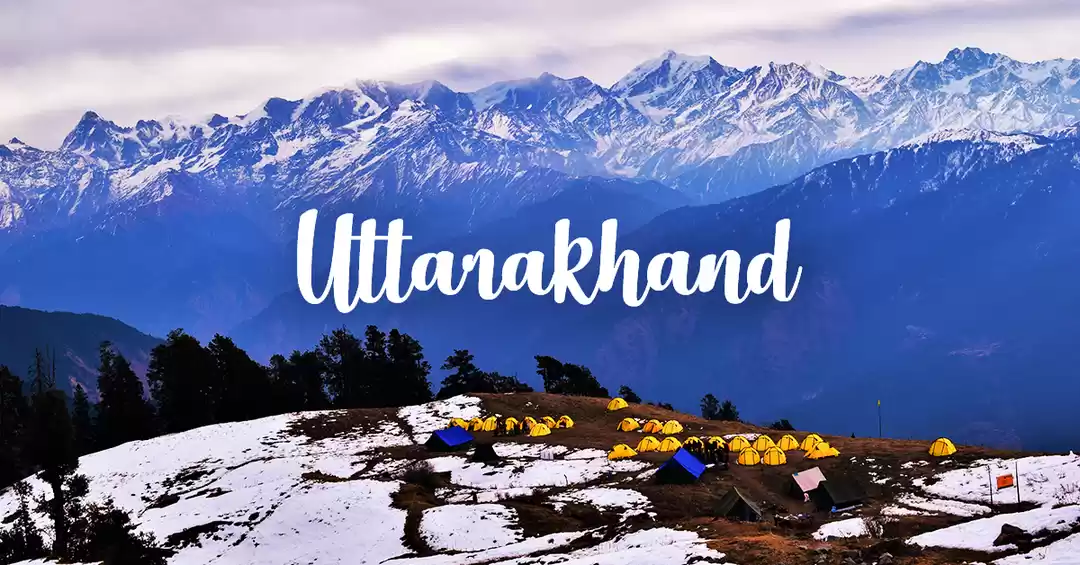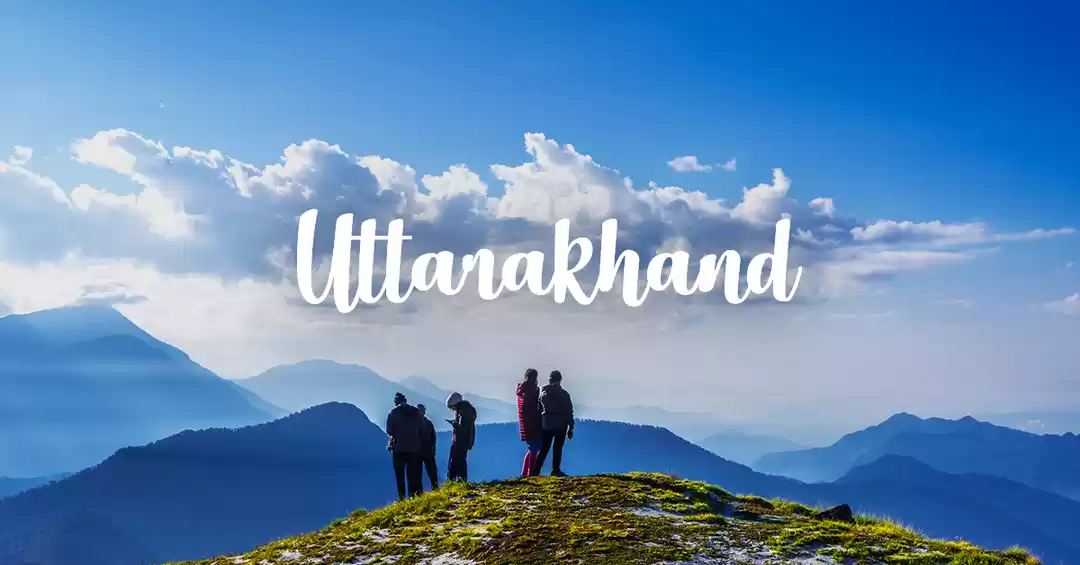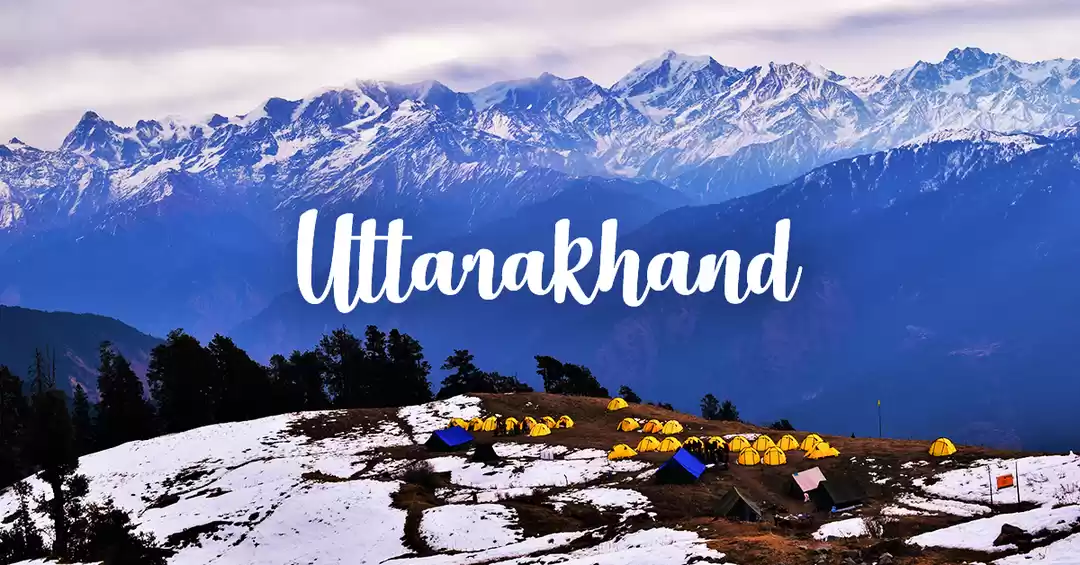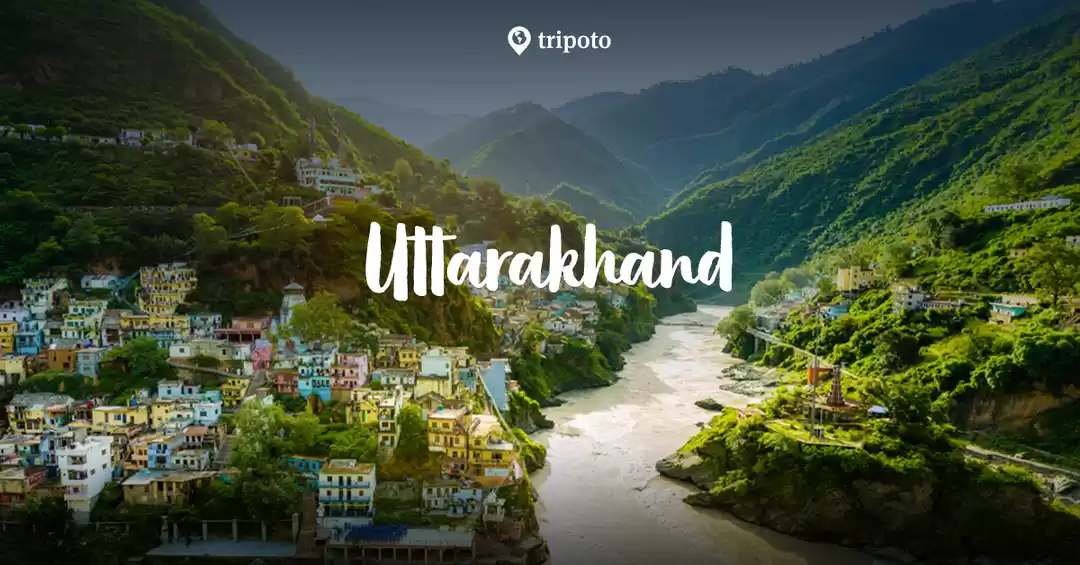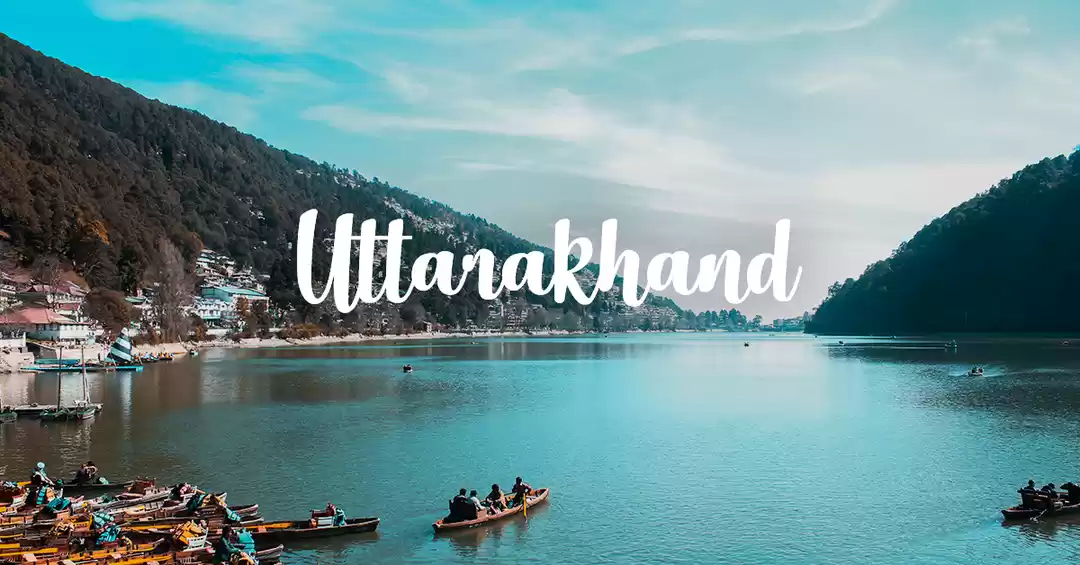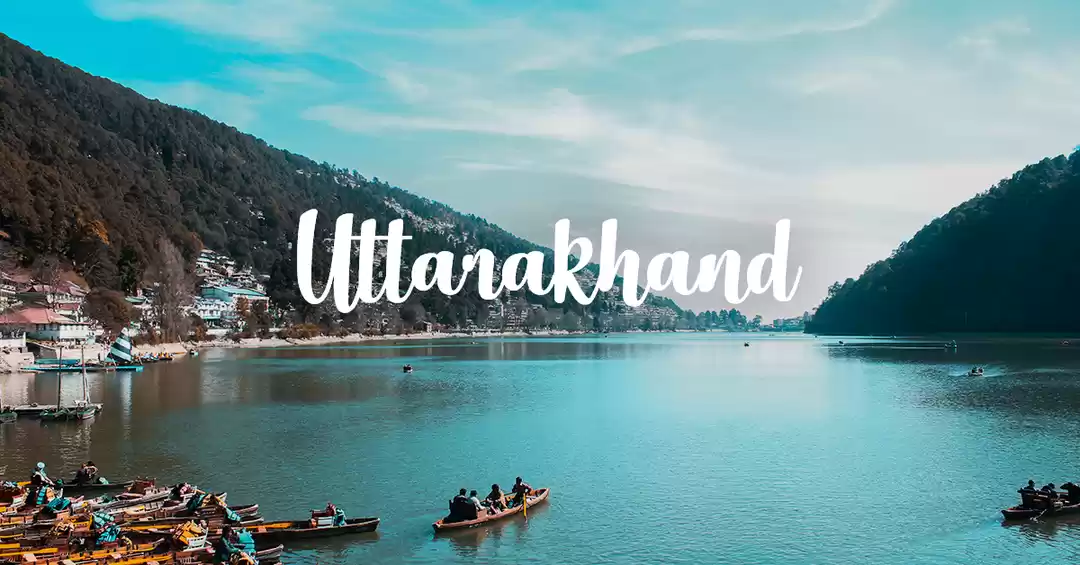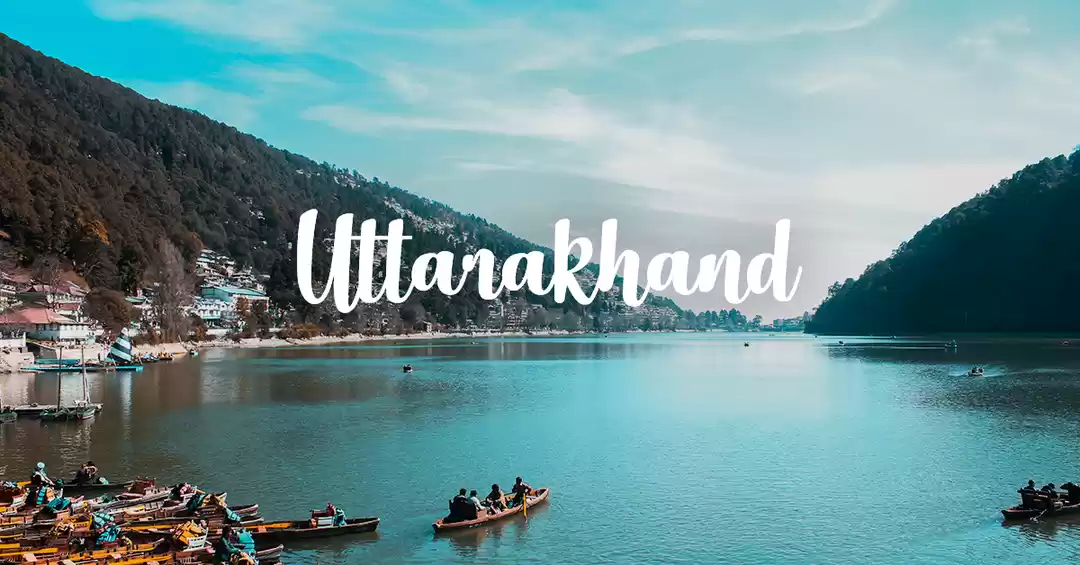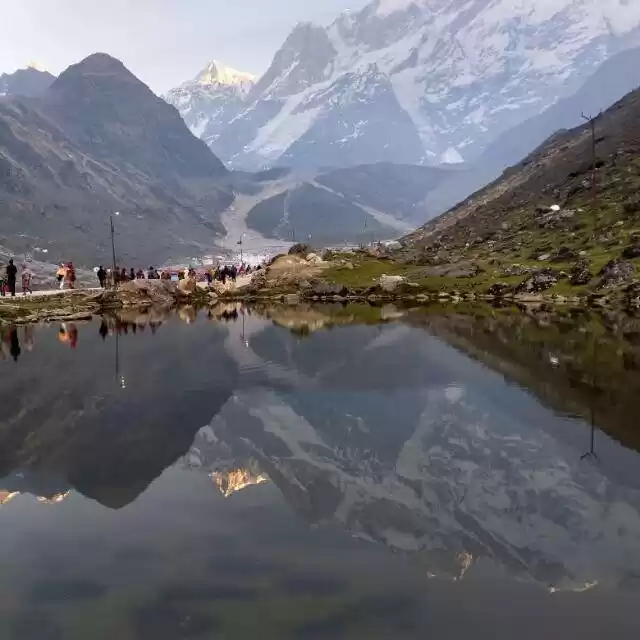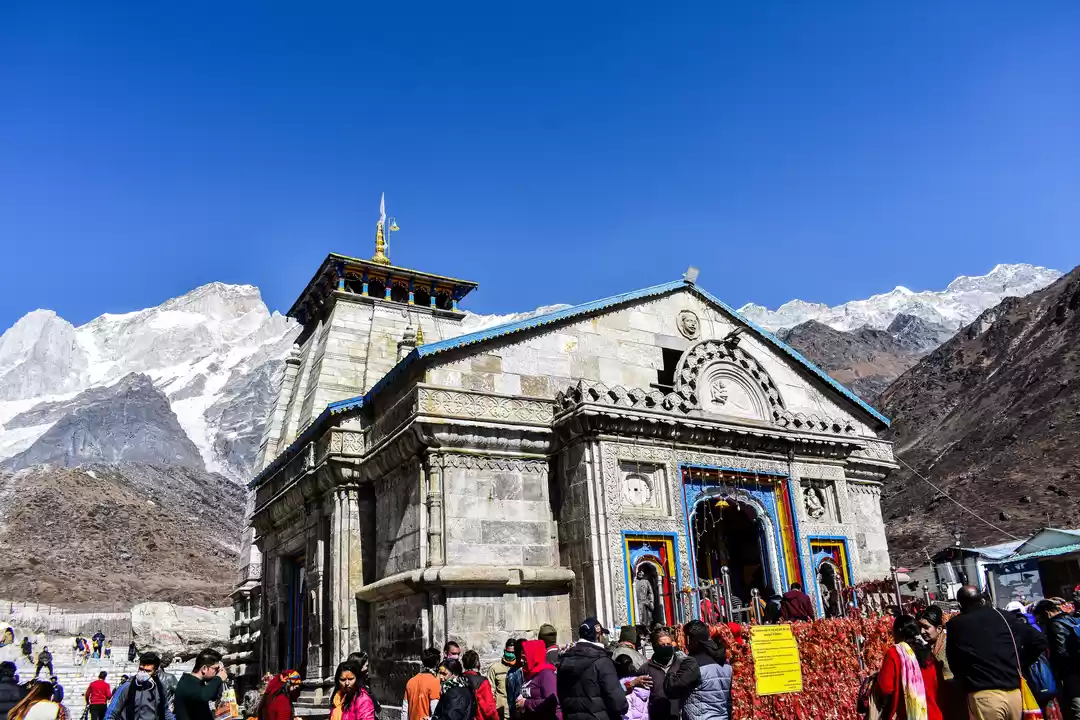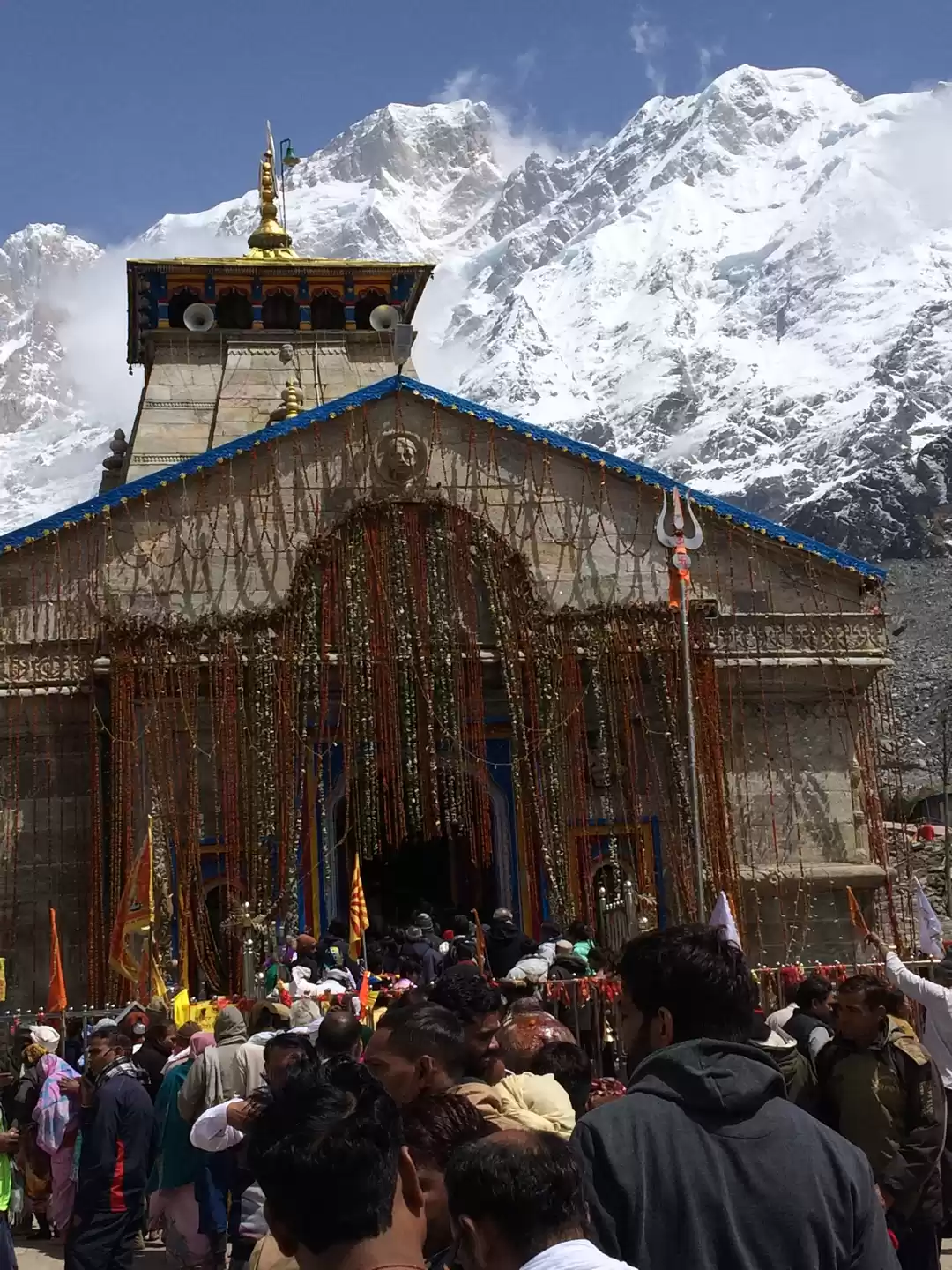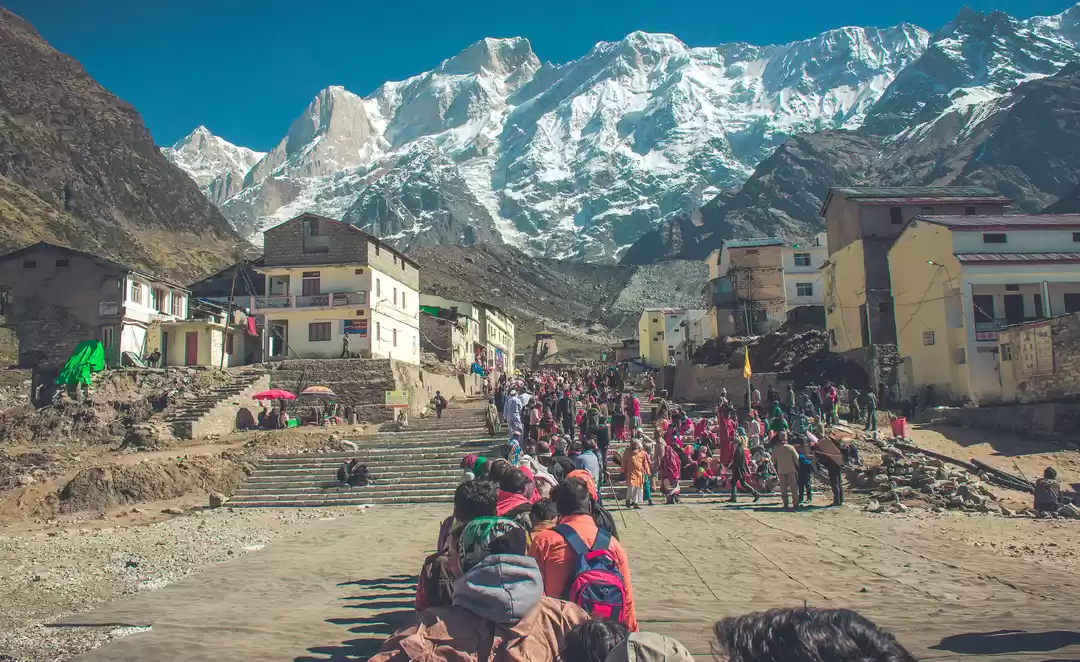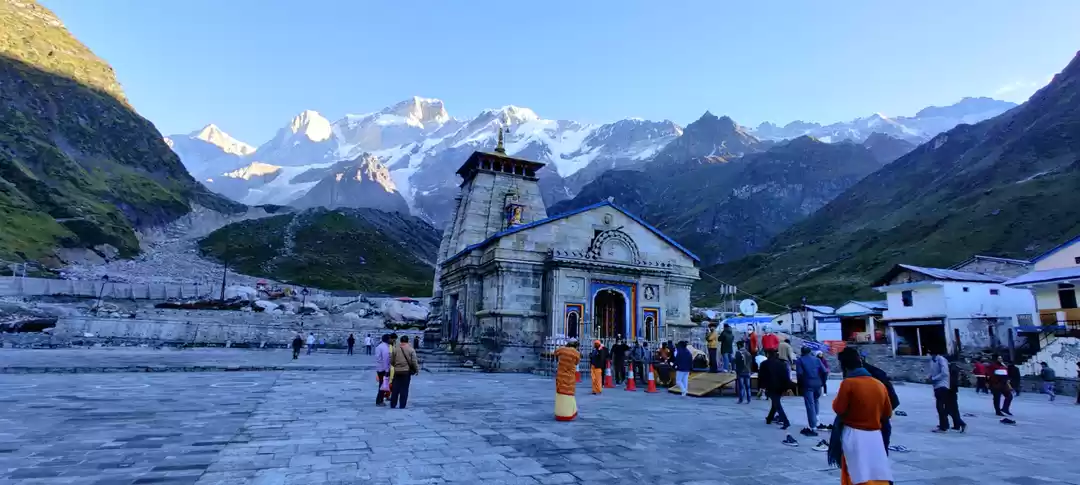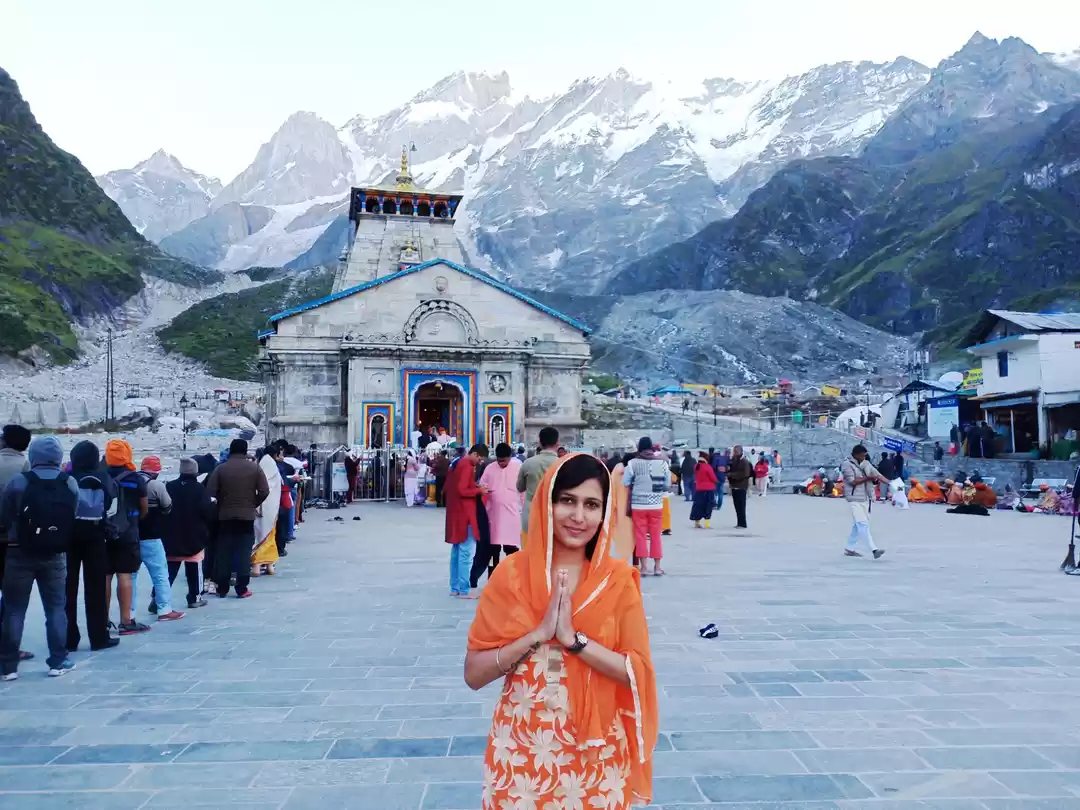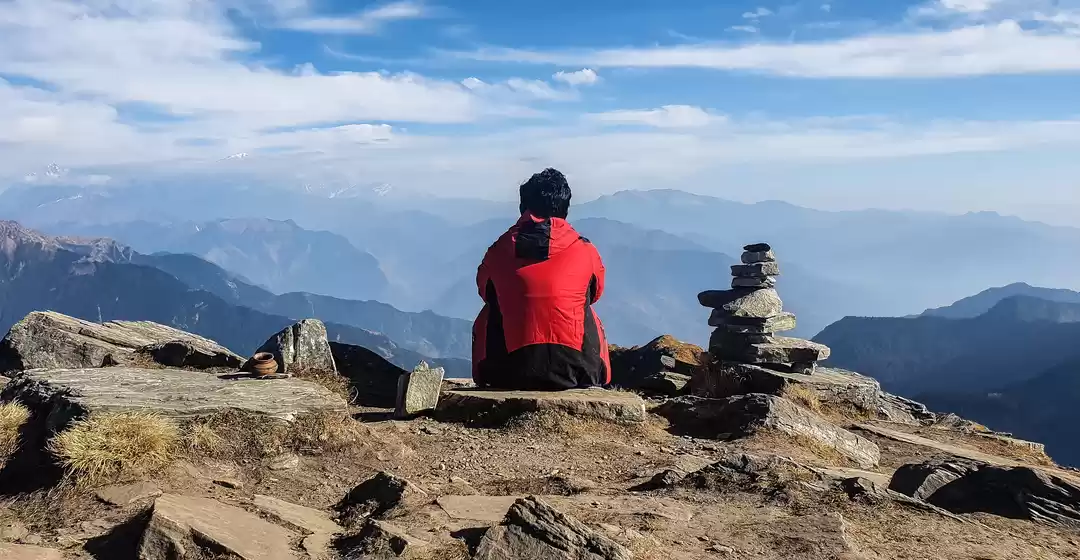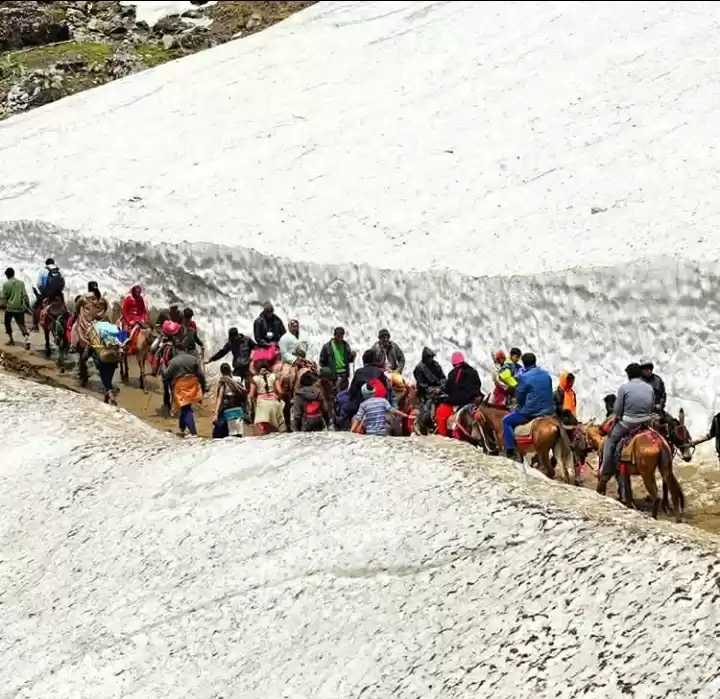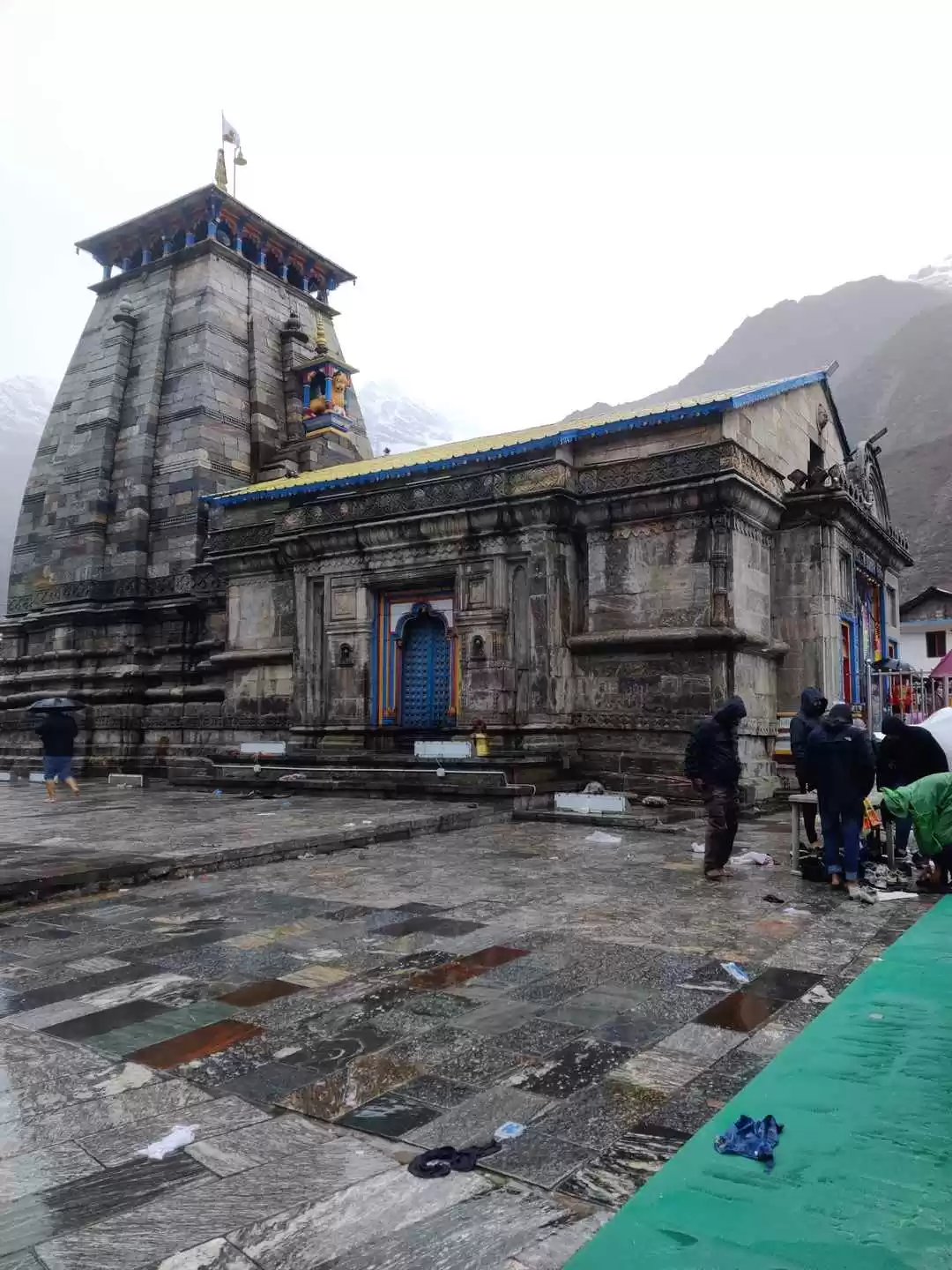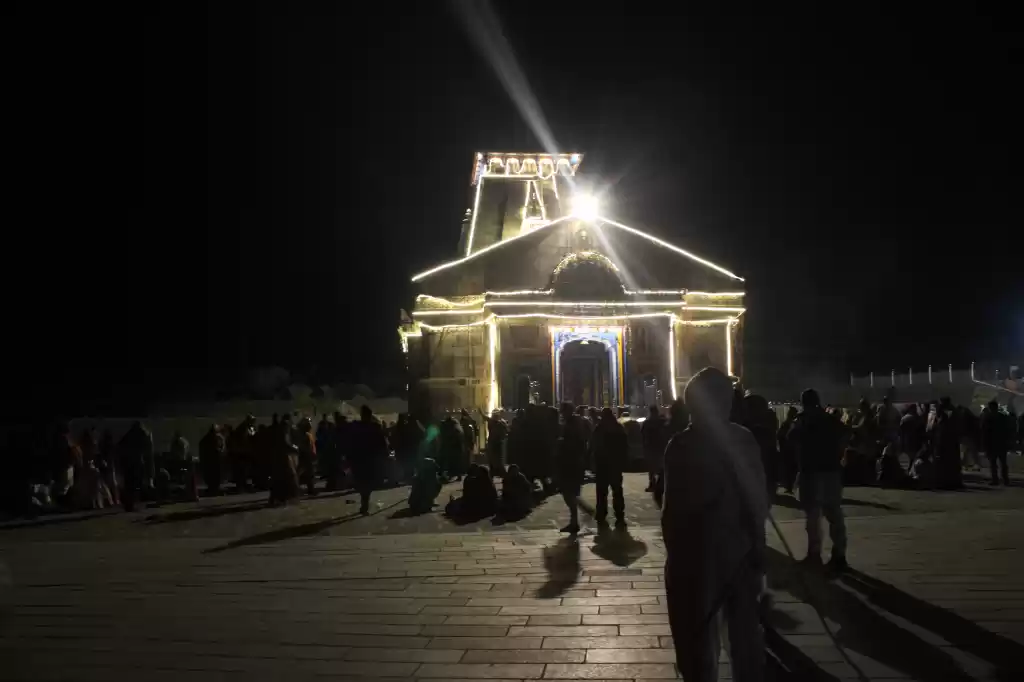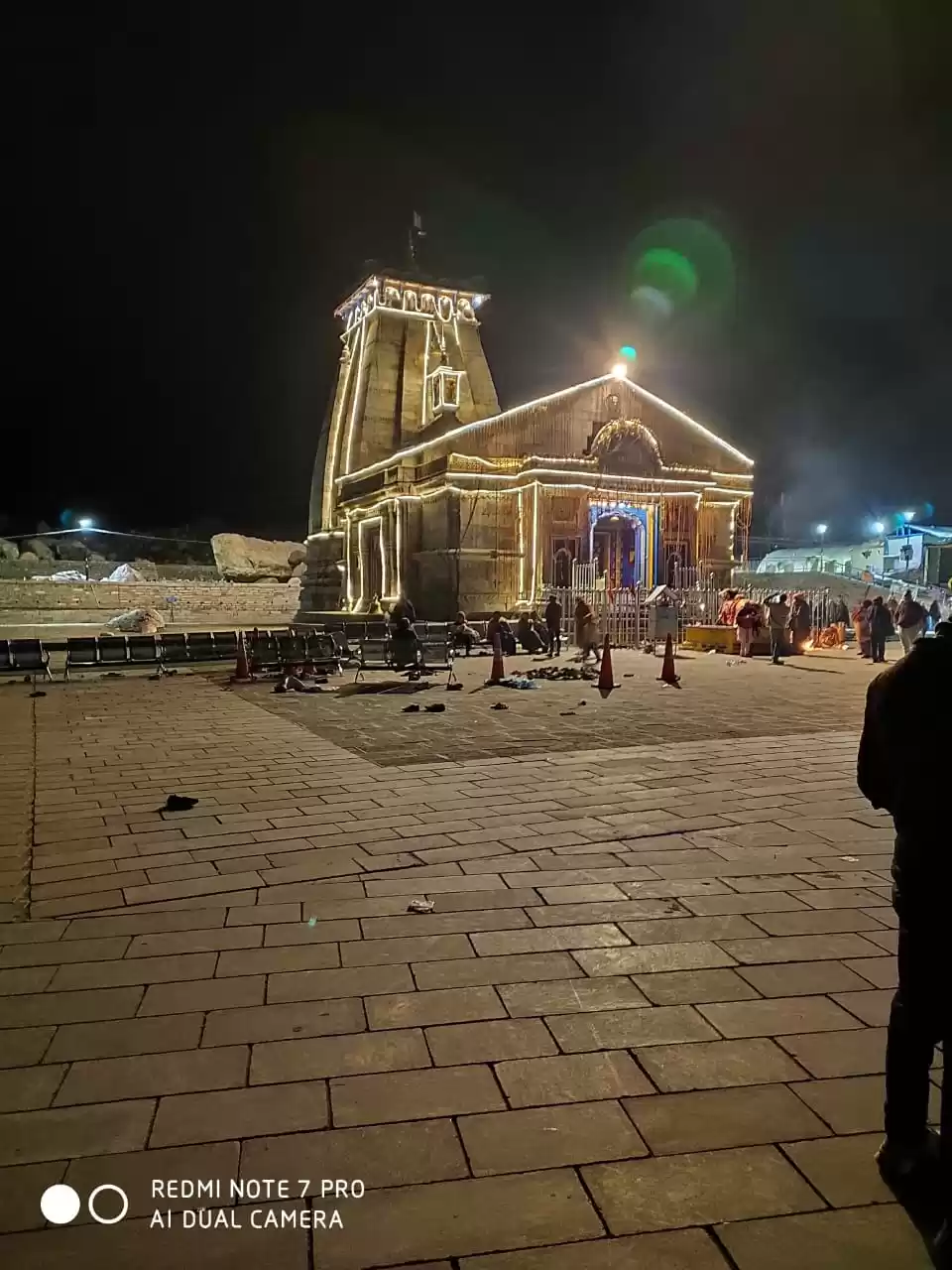
The longing for Kedarnath
Out of many reasons for which I wanted to visit Kedarnath including the thrill of experiencing Himalayas from upclose; my spiritual seeking topped the list. I follow Sadhguru and the way he articulates about Kedarnath, once you listen to him, there is really no way you can stop yourself from not longing to go to Kedarnath.
Last year plans that failed
Back in 2021 October, I and two of my friends had planned and booked for trip to Kedarnath. We were forced to cancel our trip due to two reasons -
>Incessant rains during those days; that was also the time when Nainital was flooded to extreme.
>Super rush at Sonprayag (starting point of trek) and Kedarnath. Long queues at registration point were forcing people to start trek in noon instead of morning. Since Kedarnath had opened after 2 years (due to Covid), so the rush was at peak.
Planning in 2022 and Accurate/Inaccurate Weather Predictions
Come 2022 and this time the Monsoon was again heavy in Uttarakhand and other parts of North India. Waited for Monsoon to get over and decided to plan a trip (with other 3 friends this time) in September. 2 of the friends were originally from Uttarakhand, and one’s family was already staying in Rishikesh.
I thought this time I am going to be smart and plan in good weather. I checked out weather prediction about 20 days in advance on Google and various other websites, and found that around 25th Sept should have very low rain probability.
Ultimately, Nature had other plans, weather prediction changed 7 days prior to our journey. 25th Sept, the day we were supposed to trek up to Kedarnath, showed 100% chances of rain and that too for whole day; there were also prediction of thunderstorm. Days before 25th and after 25th were not so rainy. It was like nature was saying to me- ‘You were so calculative about not coming in heavy rains, which so ever date you plan, I will ensure rains :D’
1 day prior to start of our trip from Gurgaon, Gurgaon witnessed extremely heavy rainfalls, and decade long records were broken. Huge waterlogging happened at many places including our office area. We had concerns on whether we will get a taxi in early morning for our trip or not; but BluSmart (a cab service which requires prebooking) came to our rescue and cab did arrive on time in morning.


Itinerary
23rd Sept – Gurgaon to Rishikesh via train.
24th Sept – Rishikesh to Sonprayag via cab. (Will like to do this part on motorcycle next time)
25th Sept – Trek up to Kedarnath
26th Sept - Trek down from Kedarnath
27th Sept - Sonprayag to Rishikesh and Rishikesh to Delhi via overnight train.
Rishikesh and Sonprayag
Rishikesh city, beautifully set on the banks of river Ganga, and with its plethora of Yoga/Meditation centers set the ideal tone for our spiritual journey.
The road journey from Rishikesh to Sonprayag is very scenic with beautiful views of river and hills. The first 70% of road was quite wide and well laid out, last part of journey beyond Guptkashi had tough broken roads, lot of jams and the ride was very slow.
Stay in Sonprayag was in a hotel which had good rooms but bad food, they served me rotten old Dal and charged for it even after themselves accepting that it was not in edible condition.
Trek up day
Sonprayag to Gaurikund (about 5 kms) can only be covered in Bolero taxis available at Sonprayag. It was raining since early morning and thus we wore both upper and lower body raincoats, and covered the bag, right starting from hotel.
The trek was officially 16 km before the 2013 flood tragedy, after which a new route was developed. From what most locals and trekkers tell, the trek is now about 20 to 21 kms one way. So, please ignore the official distance markings which come in between, they are not updated.
We have to reach upto 11,500 feet starting from 7000 feet. Below are some key pointers about the trek , I have covered both the positive and negative.
1. Difficulty - The trek is decent steep and feels long for most climbers. Out of us 4 , one climbed as if walking on a plain road, but rest of us had to push ourselves. The last part of trek is more difficult due to altitude as body feels exhausted quickly, and also since you have been tired from the initial part of trek. Start as early in the morning as you can, we had left our hotel at 6 am, and many people left the hotel at 4 am.
2. Waterfall all around (most scenic part of trek) – The hills around are very lovely and every 15-20 minutes , we encountered a waterfall , either on opposite far away hill or on our hill. Since it was raining good, so the waterfalls were all at peak and some of them were crossing our trek path. All in all, I think we encountered 70 to 80 waterfalls (far and near), and this felt most beautiful part of the journey. I have been to Kashmir, Ladakh, Western Ghats in India and Switzerland, Phuket; where I encountered many beautiful falls. But so many falls within a single day, had never happened.
3. River along the trek – There is a river (Ganga tributary named) which runs all along the trek and there are 2 bridge points where you have to cross it. The lush waters of river were very scenic ,and the roaring sound of river in the rainfall made it more exciting.
4. The devotees, yogis, Sadhus and the poor ones (most overwhelming part for me)– I saw 3 people purposefully trekking barefooted. I saw a middle aged person (most probably a yogi ) trekking up topless and only a dhoti on lower body. Many people including the old-aged ones were had very basic clothing and sandals/slippers (no shoes) but still trekked with utmost devotion. Many kids also trekked quite well. I was feeling overdressed and overprepared watching these people; they had my immense respect for their commitment. I read a news last year, where a poor person trekked upto Kedarnath with his 2 kids and then had no money for food or to return back; a policeman then helped him.
There were also few porters who ported person on their back in a basket, carrying upto 60 kgs. I talked to one of them, and he said – “Kya Karein , paise ke liye krna padta hai” (Translation – What can we do , we have to do it for the money !)


5. The annoyance of Mules/Horses – The most annoying and difficult part of the trek is to deal with mules. According to my estimate about 50% of people used mules the day I trekked. According to what I see, out of this 50% , about half of them initially started the trek on foot but then switched to mule somewhere along the path as trek became difficult and also due to heavy rains on that particular day.
Mules run all along the trek path, there is no particular segment or direction they cover and sometimes only 1 guide is handling 3-4 mules. This all makes the encounter very difficult. I was pushed thrice by mules, luckily I did not fell. One of us had a fall due to mule pushing, luckily he fell on non-slope side and that too on soft mud. Many times, we had to stop on side to allow mules to pass.
I am pretty sure that if there were no mules, I would have easily saved 20% of time in trekking.
I think government should restrict the number of mules to around 25% of total travellers, and not 50%.
6. Wet body receives grace better :D and A shoe recommendation !
The rains were so persistent that even in raincoats we got wet till the core. Thus, while trekking down , we also wore a poncho over raincoat. My water resistance shoes also got drenched but that was more of my mistake as I had tried to experience one waterfall from too up close. This is not a product promotion, but I have to put in a word for Decathalon water resistant trekking shoes. The grip for trekking and water/snow resistance is quite good. We four and also other trekkers we met on path, genuinely mentioned that Decathalon shoes saved their day. My particular model was - . I had used them for one other Himalayan trek before, (that also had snow) and they were good there as well.
Sadhguru says this and also by my personal experience – “A wet body receives spiritual grace better. “ So, the incessant rains did add to my positive experience overall !
Finally – The Kedarnath Temple
1. Spirituality - The term yoga means union. Yogi means a person who has experienced the ultimate oneness with existence within themselves, experiencing the all-pervasive non-physical dimension of existence. Many yogis who have experienced the peak of life within themselves, do not find disciples around them to share even 1% of their experience and skillset. Sadhguru says that same is true for him; that is when he has thousands and thousands of super committed and intense individuals around him. Such yogis put their knowing in consecrated energy forms (like a mountain or a linga (ellipsoid rock) or a rock. According to Sadhguru, Kedarnath has been a place which has been thrived by thousands of yogis and mystics over past 10,000-20,000 years, and they have shared their knowing in the natural shiv linga at Kedarnath.
My experience – I can only say this that I did experience Kedarnath to be something more than just a rock/temple, and since most spiritual experiences are subjective, sharing any further details won’t help anybody or me.
2. The legend of Kedarnath - Story behind it and marvel at humans who existed thousands of years ago.
There are 2 parts of Kedarnath temple , one was constructed by Pandavas and other much later by Adi Shankaracharya. Legend says that Pandavas came to this area to pay penance for their killings in war, but Shiva did not want it to happen to them so quickly, so he disguised himself in form of Nandi (a bull). The story says when the bull raised its body, its various body parts came up at different places in Kedar region , 5 such regions are called Panch Kedar, the hump came up at Kedarnath.
Now, I know that many of the readers will think what kind of illogical mumbo jumbo story is this ! In India , stories were meant to bring out the core truth and spoken in simple language and examples, so that it will be shared across generations with much ease. They may not be factually true, but they are not untruth. Because of such stories, people could emotionally relate to the place and the place kept its significance for thousands of years.
When even today, it is so difficult to reach such a place; think of the commitment, physical & mental strength and architecture marvel of the people who built such a wonder with rocks that still stands today after facing so many natural calamities. Think of a person like Adi Shankaracharya (or thousands like him) who embarked on a journey from South of India at a time when there were no maps, no roads, no motor-vehicles. What kind of resolve and perception had existed in such humans !
An example of Kedarnath that showed India was always united – From the time Kedarnath was established, the priests are from a particular lineage in Karnataka !
3. Inside and outside the temple
I was very curious to see the linga at Kedarnath. Due to large crowd, the darshan/visit at the inner sanctum (Garb Grah) was not allowed. There was a long queue to enter the temple and some aspects were totally mis-managed by the temple/police authorities. I could hardly see the linga for 5 seconds as I was given a hard push by police/temple authority and kind of thrown out of temple.
Fortunately, there is enough place just outside the temple to sit and meditate. I did that.
4. Staying at Kedarnath – I won’t go into lot of details here, but I strongly advise to prebook room/lodge before coming to Kedarnath. I found people arriving at 12 am after a hard wet trek, and not finding rooms up in Kedarnath. There is also option to stay in tent at Kedarnath region or the base camp for Kedarnath (2 km away from Kedarnath temple). We 4 stayed in a single room in Kedarnath which we had prebooked.
5. Trek down and food options
After temple visit in the morning and brunch, we started our trek down in afternoon , and came down; rain was less on the return day. One advice here, try to plan your trek in such a way that you don’t have to do it in night as most of the trek path had no electricity and if there is no moon, then it gets pitch dark. Enough food and water options are available along the trek and in the main Kedarnath temple region.



Thanks - I will like to thank the following people – Our good driver, My friends, One of our friend’s family who hosted us for dinner in Rishikesh, People who provided us food in our journey, My company team mates who took care of my work during this time, and My parents & My other family members who are always supportive and encourage me to take such journeys.
Thanks to you readers for reading my first travel blog! Questions and feedback are welcome.




